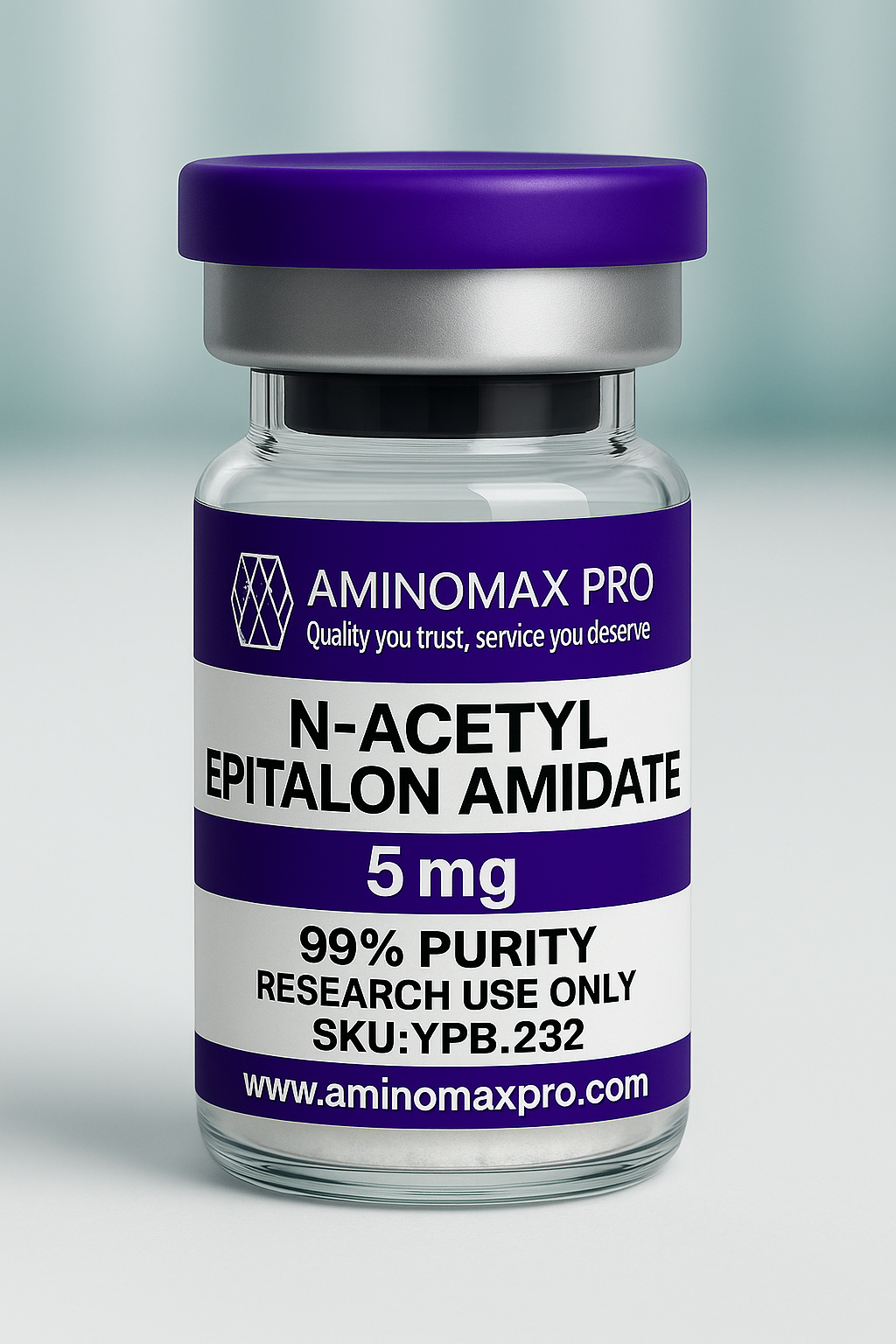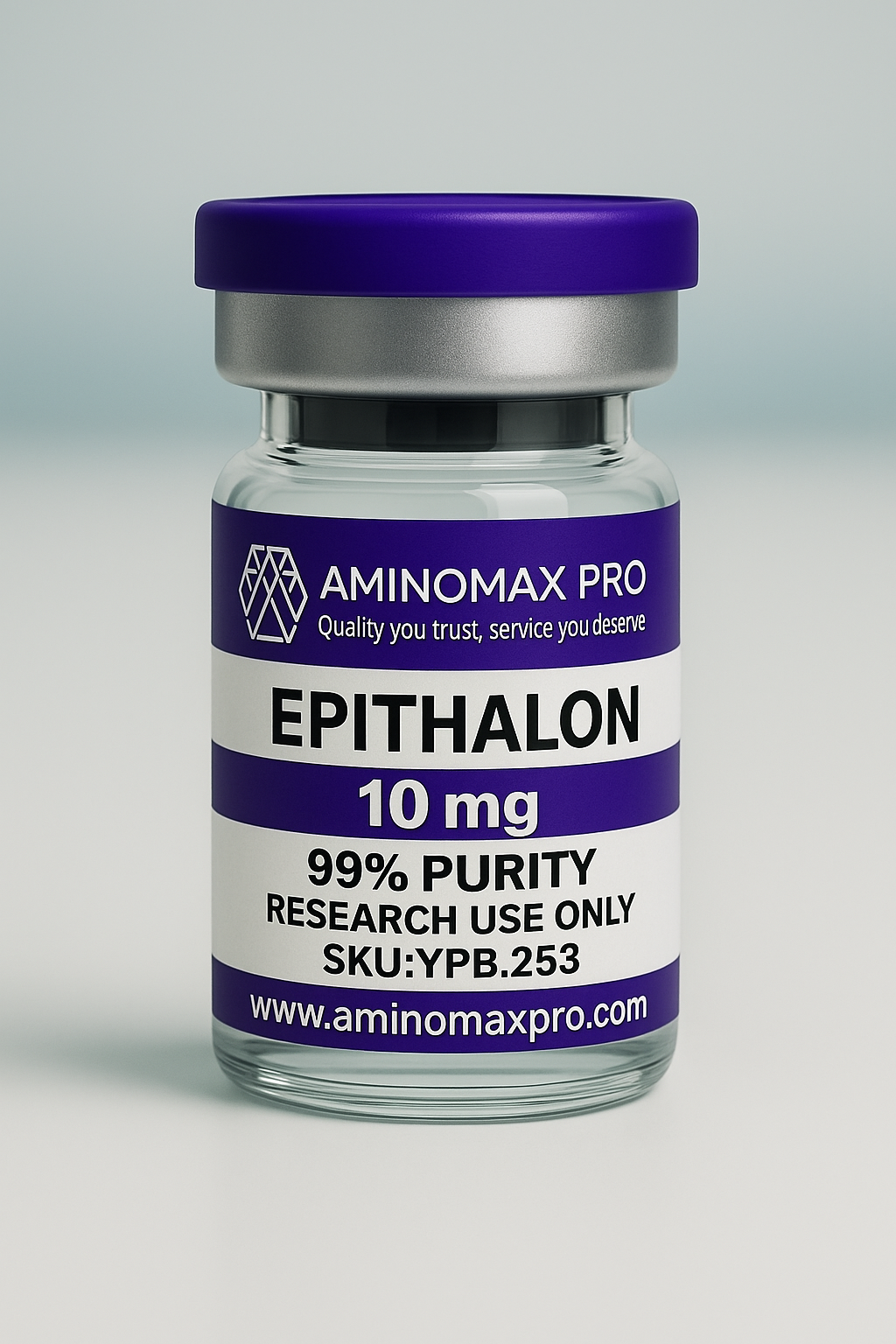Description
N-Acetyl Epitalon Amidate – Technical Biochemical Mechanism Profile
(Epithalamin-derived Tetrapeptide; Telomere & Circadian Gene Regulatory Modulator – Research Use Only)
N-Acetyl Epitalon Amidate is a synthetic, N-terminal–acetylated and C-terminal–amidated analogue of the natural pineal tetrapeptide Epitalon (Ala-Glu-Asp-Gly).
In vitro studies show that Epitalon derivatives influence circadian gene expression, telomeric DNA regulation, and oxidative stress–responsive pathways through transcriptional modulation, telomerase activation, and epigenetic signaling cascades.
✅ 1. Molecular Targets & Signaling
Although the peptide does not bind a single classical receptor, research indicates activity at cell nuclear signaling machinery involved in:
-
Telomerase catalytic subunit (hTERT) activation
-
p53/p21–mediated cell cycle regulation
-
SIRT1 and FOXO transcription networks
-
Melatonin/circadian gene regulators (CLOCK/BMAL1, PER1/2)
✅ 2. Telomere & DNA Maintenance Pathways
N-Acetyl Epitalon Amidate has been shown to modulate transcription of the TERT gene, enhancing expression of:
-
hTERT (telomerase reverse transcriptase)
-
TRF1 / TRF2 (telomere repeat–binding factors)
-
POT1 / TPP1 (shelterin complex stabilization)
This supports telomeric chromatin protection and reduces telomere shortness-associated DNA-damage signaling in cultured cells.
✅ 3. Key Enzymes and Second Messengers
| Enzyme / Component | Relevance |
|---|---|
| Telomerase (TERT + TERC) | Telomere extension and chromosomal end stability |
| SIRT1 | NAD⁺-dependent deacetylase, genomic integrity |
| FOXO1/FOXO3a | Stress response transcription factors |
| p53 / p21 | Cell cycle checkpoint and DNA damage signaling |
Second messengers potentially involved:
-
NAD⁺/SIRT axis
-
Ca²⁺-dependent nuclear signaling
-
MAPK/ERK phosphorylation states
✅ 4. Circadian Rhythm Gene Regulation
Epitalon derivatives are associated with modulation of melatonin and circadian gene machinery, particularly:
-
CLOCK / BMAL1 activation
-
downstream PER1, PER2, CRY1 transcription
-
potential reduction of age-related circadian drift in cellular models
✅ 5. Gene Targets Observed in Research Models
| Functional Class | Representative Genes |
|---|---|
| Telomere Maintenance | TERT, TRF1, TRF2, POT1, TPP1 |
| Circadian Regulation | CLOCK, BMAL1, PER1, PER2, CRY1 |
| Stress / Longevity | SIRT1, FOXO1, FOXO3A, HMOX1 |
| Cell-Cycle Control | p53, p21 (CDKN1A), GADD45A |
✅ 6. Oxidative & Mitochondrial Pathways
Research models show downstream antioxidant and mitochondrial transcriptional effects, including:
-
↑ SOD2, CAT, GPX1 (antioxidant enzymes)
-
↑ NRF1, TFAM (mitochondrial transcription factors)
-
↓ pro-oxidative NF-κB signaling
✅ 7. Structural Significance of Acetylation & Amidation
-
N-terminal acetylation increases stability against proteases
-
C-terminal amidation enhances binding affinity and peptide half-life
-
Combined modification leads to a more durable Epitalon analogue for in-vitro work
✅ Mechanistic Summary
-
Synthetic, stabilized Epitalon analogue
-
Modulates telomerase gene expression, shelterin proteins, and circadian transcription factors
-
Involves SIRT1/FOXO, p53/p21, and antioxidant gene networks
-
Suggests roles in genomic stability, oxidative resistance, and cellular timekeeping in laboratory models
Research-Only Classification
This compound is not a supplement, drug, or therapeutic agent.
It is supplied strictly for controlled laboratory research, not for human or animal use, not for ingestion, injection, or biological application.



